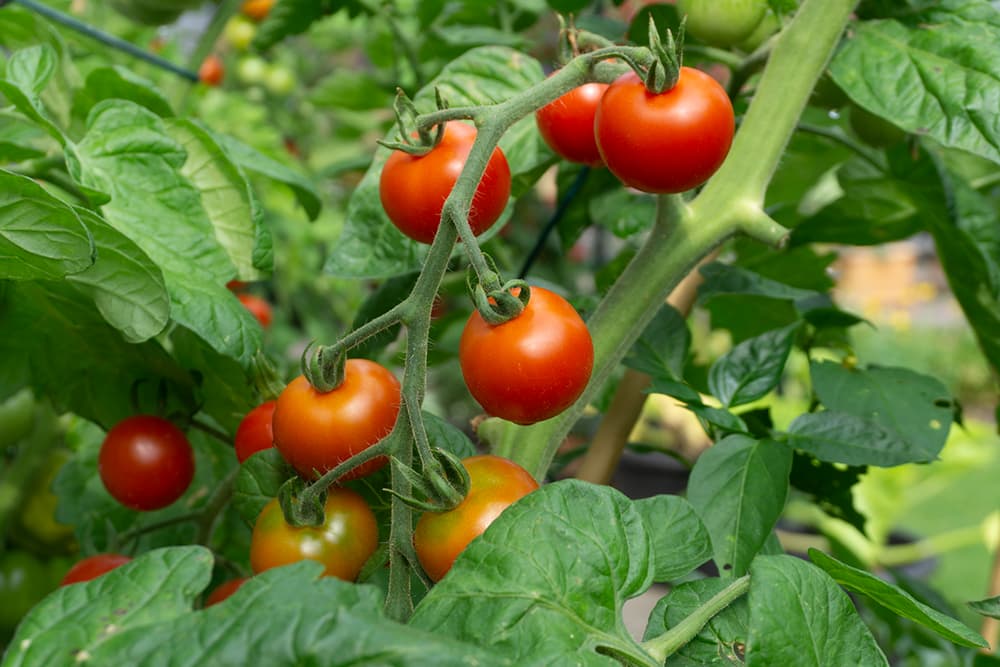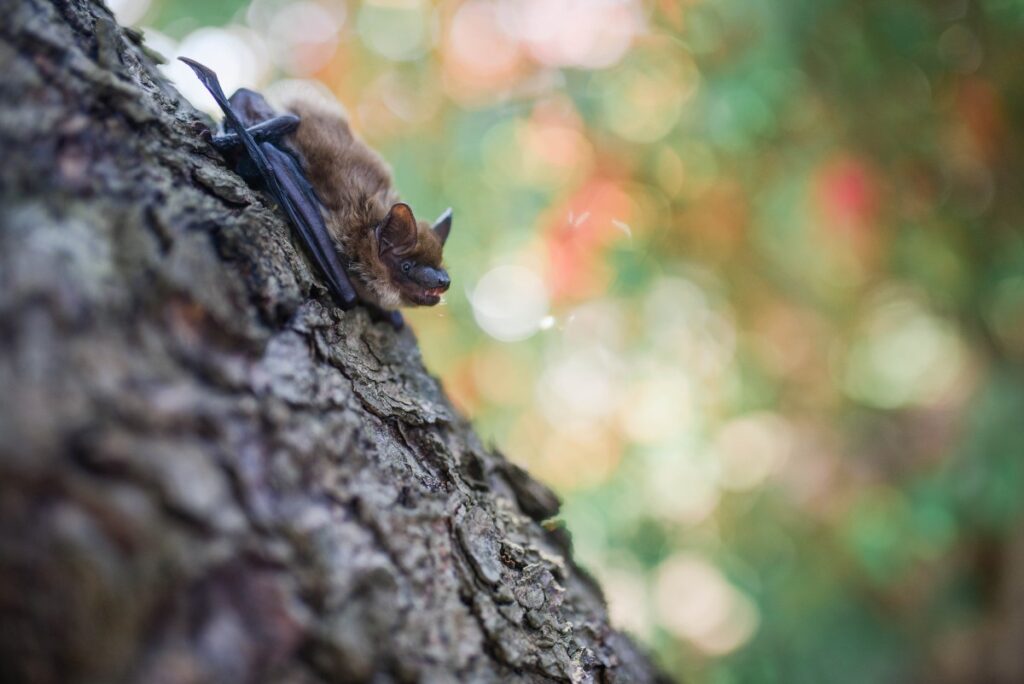How to invite bats into your garden: 5 tips

Bats play an often invisible but important role in nature and in our gardens. I (editor Iona van den Dries) have fond memories of bats. As a child I loved watching these aerial acrobats from a driveway, which was still glowing from the summer sun. That has never really changed.
Read more below the advertisement
During a bat excursion of BAT030 (a research project in Utrecht) I realized that bats need our help. And guess what? By making a few simple adjustments, you can make your garden more bat-friendly! I spoke with bat expert Marlot Jonker of the Mammal Society about what you can do for bats in the garden.

“Bats are an important part of our living environment,” Marlot explains. “By nature, bats are mainly insect suppressors. Take the oak processionary caterpillar or the corn borer (a type of moth), for example. If there are enough bats around, you have much less trouble with such pests.”
In the Netherlands and Belgium, only species of bats that eat insects are found, but in other places bats have other functions, such as spreading seeds and pollinating flowers. “Bats play an important role in much of the food we eat. Think of coffee, chocolate, mango, cashew nuts and blue agave, from which tequila is made. Bats are actually the forest managers of the tropics.”


Unfortunately, these protected species are having a hard time in the Netherlands and Belgium due to the loss of their natural habitat. “The bat does not exist,” says Marlot. “In the Netherlands and Belgium, we have to deal with different species, each with their own living conditions. Bats from forest environments as well as built-up areas are going through a difficult time.” Many bats seek safety and food around houses and gardens. There are therefore small things you can do that make a big difference.

Bats are also excellent neighbours. Not only do they eat insects, they also cause little to no nuisance. “During the maternity period, you may hear some scratching and social sounds in the wall. Children in particular can hear this well, because they can pick up those high tones. If you do notice anything about maternity colonies, it fortunately doesn’t last long: within a few weeks the young will be flying out.”
Bats also have another advantage: they make great fertilizer for your (vegetable) garden! “Bat manure or guano is good food for your tomatoes, for example. Guano also decomposes into dust, so you can easily remove it with a brush.” And of course bats provide fantastic entertainment with their aerial shows!
Bats often do not have one home, but a network of places they go to. Furthermore, bats, like many people, commute between places where they sleep and 'work' - or in this case, sleep and hunt. They use flight paths for this. "Their flight paths often consist of dark tree-lined avenues, water structures and other linear elements in the landscape", Marlot explains. When you see bats skimming over the canal or through a park, you are looking at their highway, so to speak.
Do you want to invite (more) bats into your garden? Support bats (and other garden animals) with these five tips.
Not necessarily a garden tip, but an important one: take bats into account when renovating. Bats may seek shelter closer to your home during the day or for their hibernation in the garden. For example, always check your cavity walls before (re)insulating. You can literally save lives with this! Especially during the maternity period (June/July), when the females come together to have young, it is extra important to look. In the winter, keep in mind that bats react more slowly because of their hibernation and sometimes do not fly away in time.

Making your garden more bat-friendly starts with plants. “Make sure there are plenty of insects in your garden at night,” advises Marlot. “For example, plant night bloomers that attract moths. Choose native wild plants in particular – the ideal food for native insects. Think of wild honeysuckle, wild marjoram, large thyme or Michaelmas daisies.” Butterfly bushes ( Buddleja ) are also popular with certain moths .

Ideally, you should have flowers blooming somewhere in your garden all year round, so that bats can continue to find food in your garden until they hibernate again. Finally, choose organic plants and combat pests with eco-friendly alternatives to help bats in the garden.

Water is important for bats. It doesn’t matter how big or small your garden is, because every little bit helps. “Bats use water to drink and, if there is enough space, to hunt. So make sure there is water in your garden, even if it is just a bowl,” Marlot advises. This way, water attracts insects, which bats in turn come to hunt. With a pond, you also attract other natural enemies of insects, such as frogs and toads. You can also plant your pond with native water and bankside plants that insects (and therefore bats) love, such as meadowsweet, marsh marigold or large cattail.
Bats are real nocturnal animals and therefore do not like light. If you want to make your garden more bat-friendly, a good guideline is: the darker, the better. "If you need light to walk along the garden path, for example, only turn it on when you are walking there and then turn it off again," says Marlot. It is also better not to place garden lights under your bat box, if you have one. If the light shines in, it disturbs the bats.
Some bats seek out roosting places around the house, such as in trees and under roof tiles. “An old tree in the garden is a perfect habitat for various bat species. Loose bark or holes made by a woodpecker are good hiding places, for example.” As with many garden animals, it is important for bats that there are messy corners in the garden, a piece of wilderness where bats and insects can hide. Some shelter and a messy spot here and there can help a lot.
Maybe you already have one in your garden: a bat box. Such a box can be a good addition for bats in your garden, for example if you have few other hiding places to offer. If you hang a bat box, hang it high enough, at least four meters from the ground. "That way, bats have enough height to fly out", Marlot explains.
“Furthermore, always make sure that the top is waterproof. Bats do not like damp hiding places.” If you mount the planks at an angle (namely with a larger opening that then tapers), you create a bat box in which both small and larger bat species can hide. On the website of the Mammal Society, for example, you can find construction drawings to make your own bat box.
Tip!

What are the most important tips for your garden? In short: “Native, dark and messy,” Marlot answers. And water, of course, even if it is only a little bit. “It is so valuable to stop and see how special the world we live in is. Quite a lot of people are afraid of bats, while many myths are not true. I hope that people can be more amazed by these fantastic animals and get a taste of their world, which we otherwise see so little of.”
Want to learn more about bats? Then join the Night of the Bat! In many countries, including the Netherlands and Belgium, you can often join all kinds of excursions for free during the last complete weekend in August.
Bats are special creatures. For example, of all mammal species in the world, a fifth are bat species, the bone structure of bat wings is the same as that of a human hand and bats often have their mouths open in photos, because they look around them with their echolocation. However, there are also stories that are not true. I talked to Marlot about three persistent bat myths.
With their echolocation, bats can see well in the dark and will avoid you. They may come close if an insect flies by, otherwise they like to stay away.
Of more than 1400 species, only three species in Central America drink blood. Incidentally, these are very social animals, for example, sharing their food with others from outside their family.
Bats, as mentioned, prefer to stay away from you. Only if you pick them up, they can bite in self-defense. Do not pick up (injured) bats if you find them, but call the animal ambulance, for example.
gardenersworldmagazine





%3Aformat(jpeg)%3Abackground_color(fff)%2Fhttps%253A%252F%252Fwww.metronieuws.nl%252Fwp-content%252Fuploads%252F2025%252F05%252Fgotland-zweden-tips.jpg&w=1280&q=100)



